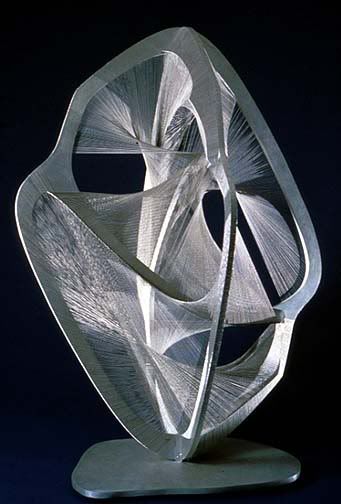When WWI broke out he moved to Copehangen, then Oslo, Finland with his brother, Alexei. After the war ended he moved back to Russia in 1917 and became engaged in both art and politics. He contributed to open air exhibits and taught at Vkhutemas with Wassily Kandinsky (a synesthete artist). At this point he began experimenting with kinetic sculpture.
A lot of Gabo's sculptures used machined parts, which was a big deal in Russia at that time since machinery was a rarity. It was at this point that the term constructivism was coined within the 'Realistic Manifesto', which he wrote with his brother, Antoine Pevsner in 1920. The key elements of Constructivism that were outlined in their Manifesto still hold value today and are used by constructivist sculptures all over the world.
Now, on to his artwork.
Gabo aimed to put feeling and emotion into his sculpture by giving them flowing lines, occasionally mixed in with sharp angles. His sculptures often used thick, metal frames with a lighter gauge machined wire to fill in spaces that he wanted to have mass. His pieces are often heavily abstracted or completely non-objectional. Example, "Linear Figure #4"

The interior lines are what make this piece. Without them it would just be an open cube, and not very original. However, Gabo adds subtle curves that change depending on the direction it is viewed. The interior form draws the eye to a central focal point. The wires on the inside remain straight, but the points of origin shift slightly os it appears to be bending, like a double helix.

No comments:
Post a Comment